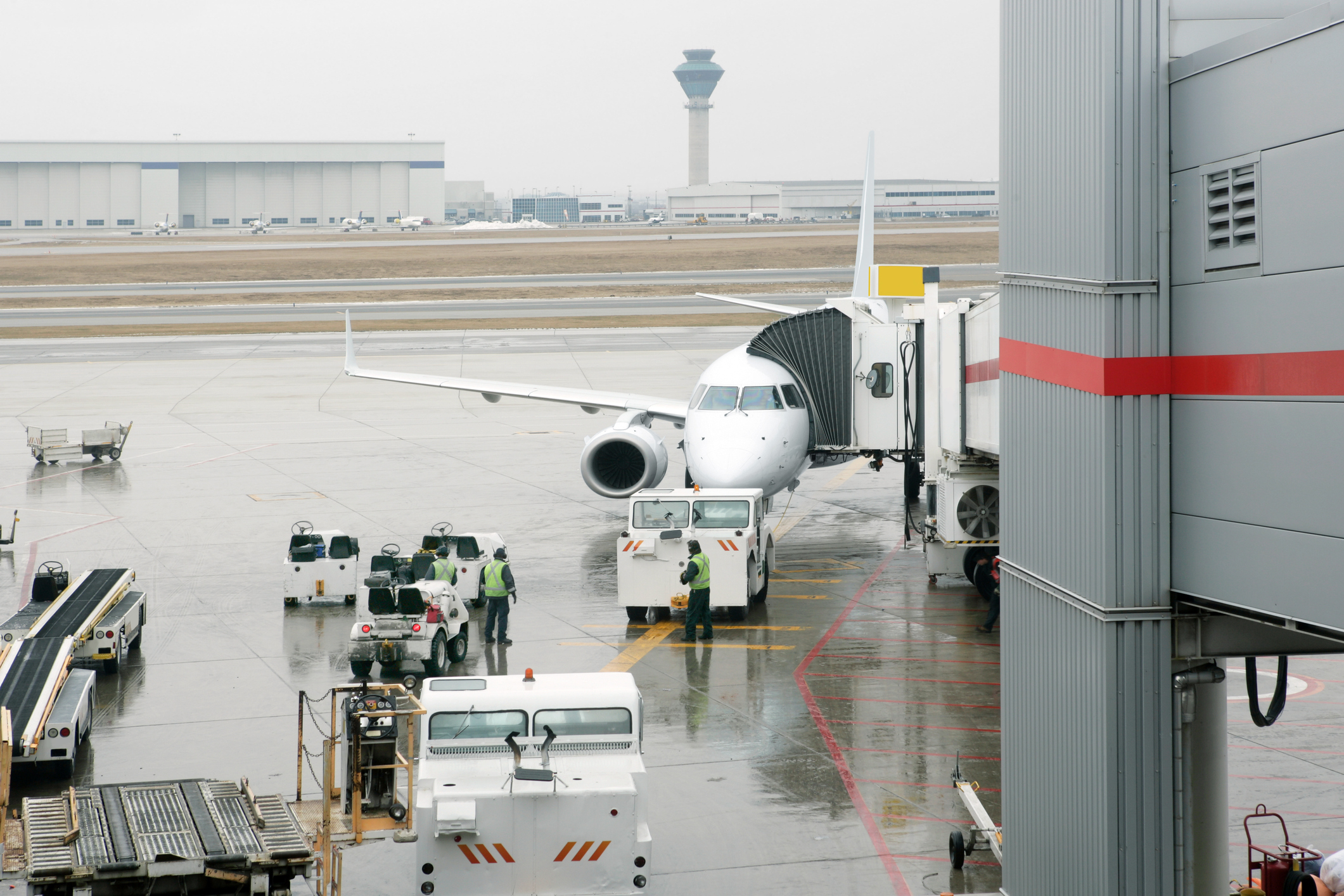The Benefits of Tank Monitoring for Airport Ground Support

To keep airport facilities running smoothly, efficiently, and safely, ground support crew and ground support equipment (GSE) must be firing on all cylinders 24/7/365. If not, there’s an imminent risk that ground-handling services performed on an aircraft at the terminal gate may not be performed promptly or, worse, not conducted safely.
The primary purpose of the ground support crew and GSE is to support the safe operations of the aircraft after landing and before taking off again. These services include, among others:
Cabin services: Services that ensure passenger comfort and clean cabins.
Catering services: Services for unloading unused food/drinks and reloading fresh food/drinks for passengers and crew.
Ramp services: Services performed on the ramp or apron, such as aircraft towing, lavatory draining, and luggage/cargo hauling.
Getting Aircraft Takeoff Ready
While some of the GSE utilized by ground support crews is non-powered, such as dollies and chocks and some GSE is electric, the majority of GSE are vehicles that are powered by either diesel or gasoline. These can include lavatory service and catering vehicles, belt loader vehicles for luggage and cargo, potable water trucks to deliver safe drinking water to the aircraft, pushback tugs to help push the plane away from the gate, and de-icing vehicles.
If you’re a ground support crew manager, you can’t afford to have any of these essential vehicles off the tarmac and out of action. To that end, it’s essential to take steps to ensure they’re always job-ready. The first step is keeping vehicles maintained adequately by scheduling regular maintenance — telematics can help to streamline maintenance processes. Second is fuel tank monitoring technology and techniques, so there’s always adequate fuel on hand to power your vehicles and ensure the fuel quality is uncompromised.
Let’s take a closer look at the second step — tank monitoring technology and processes — as well as some of the benefits that monitoring can provide your ground fueling operations.
Efficient Tank Monitoring = Efficient Operations
Leveraging telematics to monitor your fuel tanks provides you with real-time, accurate, and web-based information on fuel data whenever and wherever you need it. Not only is the technology cost-effective, but it’s also a wise investment that keeps your GSE operational with less costly downtime. It also delivers a fast ROI.
With the information and data provided, you can optimize fuel delivery schedules to get the right amount of fuel at the right time — in addition to improved inventory management, the detection of leaks or theft, and ensure EPA compliance. Plus, with telematics on the job, you enhance safety and productivity by not having your ground support crew on the tanks checking fuel levels instead of on the ground to ensure aircraft are ready for takeoff.
Beyond monitoring fuel in your tanks, monitoring for water is critical to ensuring fuel quality, tank integrity, and maximum performance of ground vehicles. Like oil and water, water and gasoline/diesel don’t mix. If present in the fuel, water can cause problems that lead to excessive downtime, including:
- Fuel pump failure
- Fuel injection plugging
- Poor vehicle performance
- Engine damage
- Corrosion of fuel tanks and dispensing equipment
Make sure you ask your fuel provider the steps taken on their end to deliver water-free fuel. On your end, make sure you have the necessary equipment and processes in place to test for water. An automatic gauging system is ideal, which depending on your fuel provider, can be included with your tank. If not, alcohol compatible water paste on a gauge stick or taking fuel samples from the tank will also work. If water is present, it should be removed ASAP, and you should consult with your fuel provider to determine the best course of action to take.
In addition to monitoring for water, tank maintenance must be monitored. Keeping up with maintenance can prevent water from entering the tank, extend tank life, and help keep the fuel from going “bad.” Tank maintenance steps to take are:
- Inspect fill and vapor caps, gaskets, and hatches and replace if damaged.
- Look for signs of slowed fueling.
- Inspect fill containment buckets for water. If water is present, immediately dispose of it and don’t drain back in the tank.
Additionally, it’s well worth the expense to periodically hire a reputable contractor to examine, clean, and maintain the tank interior and remove water or sludge.